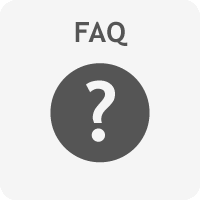Cytokines are a group of signaling proteins that play a crucial role in various physiological processes such as immune regulation, cell differentiation, cell proliferation and chemotaxis. Cytokines are produced by various cell types in many vertebrate species and are active at very low concentrations, usually in the picogram to femtogram range. Cytokines are usually produced transiently and locally, act paracrine or autocrine and interact with cell surface receptors with high affinity specific to each cytokine or cytokine group. Cytokines include chemokines, interferons (IFNs), interleukins (ILs) and tumor necrosis factors (TNFs). Chemokines are a family of small cytokines (classified into four main subfamilies: CC, CXC, CX3C and C), that can mediate chemoattraction between cells. Some chemokines are homeostatic in nature and are constitutively produced and secreted, while others are considered inflammatory and are only produced by cells during infection or a pro-inflammatory stimulus.
Naive T cells are multipotential and can differentiate into different T helper cell subsets. T helper (Th) 1 cells, which mainly produce IFN-γ, IL-2 and TNF-α, are induced by IL-12. Th1-like cytokines interact with cytotoxic T lymphocytes and macrophages. Th2 cells, interact with B cells, are induced by IL-4 and IL-33, and secrete IL-4, IL-5, IL-13 and IL-31. Th17 cells, induced by IL-6, TGF-β and IL-23, secrete IL-17A, IL-17F, IL-6, TNF-α, GM-CSF, IL-21 and IL-22. TGF-β in the absence of IL-6 is necessary for the induction of regulatory T cells (Tregs). These Tregs may produce IL-10 and TGF-β. IL-6 in the absence of TGF-β can induce follicular T helper cells (Tfh) that mainly produce IL-21. IL-6 and TNF-α promote the differentiation into Th22 cells that secrete IL-22, IL-13 and TNF-α. Th9 cells are induced by TGF-β and IL-4 and mainly produce IL-9 and IL-10.
Another important group of effector proteins involved in the immune system are perforin and granzymes. Granzymes and perforin are released by cytotoxic T cells and natural killer cells to induce apoptosis in their target cells.
Signaling proteins are best be detected and measured using ELISA techniques. U-CyTech has developed several high-quality ELISA kits for the detection of cytokines and granzymes for human, monkey (including macaques and marmoset), mouse and rat models. These assays are widely applied in different research fields, including basic research1,2,3,4,5, cancer research6,7, vaccine development8,9,10,11, infectious diseases12,13,14,15 and autoimmune diseases16,17. Hundreds of peer-reviewed publications describe the successful use of U-CyTech’s ELISA systems and/or apply our high affinity antibodies in other immunoassays. Please find these references in our Reference database.
Examples of studies in different research areas using one or more of our ELISA products:
Click on the authors for the abstract of the below mentioned acticles.
- Hafkamp FMJ et al. (2022). Vitamin D3 priming of dendritic cells shifts human neutrophil-dependent Th17 cell development to regulatory T cells. Front Immunol. 13: 872665.
- U-CyTech products used in this study:
- Human IL-1β ELISA kit
- Human IL-23 ELISA kit
- Type of sample: cultural supernatant from dendritic cells
- U-CyTech products used in this study:
- Kim YT et al. (2024). Highly secreted tryptophanyl tRNA synthetase 1 as a potential theranostic target for hypercytokinemic severe sepsis. EMBO Mol Med 16(1): 40-63.
- U-CyTech products used in this study:
- Marmoset IL-6 ELISA kit
- Marmoset TNF-α ELISA kit
- Type of sample: plasma
- Monkey species: Callithrix jacchus
- U-CyTech products used in this study:
- Wu CH et al. (2019). Extracellular vesicles derived from natural killer cells use multiple cytotoxic proteins and killing mechanisms to target cancer cells. J Extracell Vesicles 8(1): 1588538.
- U-CyTech products used in this study:
- Human Granzyme B ELISA kit
- Human Perforin ELISA kit
- Type of sample: cultural supernatant from NK cells
- U-CyTech products used in this study:
- Willis EL et al. (2021). Effects of chronic viral infection on lymphocyte population in middle-aged baboons (Papio anubis). Comp Med. 71(2): 177-187.
- U-CyTech products used in this study:
- Monkey IL-6 ELISA kit
- Monkey IL-10 ELISA kit
- Monkey IFN-γ ELISA kit
- Type of sample: cultural supernatant from PBMC
- Monkey species: Papio anubis
- U-CyTech products used in this study:
- Liu Z et al. (2022). P311 facilitates the angiogenesis and would healing function of MSCs by increasing VEGF production. Front Immunol. 13: 821932.
- U-CyTech products used in this study:
- Mouse IFN-γ ELISA kit
- Mouse TNF-α ELISA kit
- Type of sample: cultural supernatant from mesenchymal stem cells
- U-CyTech products used in this study:
- Deng M et al. (2021). Activation of the complement system in patients with cancer cacherix. Cancers 13(22): 5767.
- U-CyTech products used in this study:
- Human IL-6 ELISA kit
- Type of sample: plasma
- Human IL-6 ELISA kit
- U-CyTech products used in this study:
- Mirandola L et al. (2015). Novel antigens in non-small cell lung cancer: SP17, AKAP4, and PTTG1 are potential immunotherapeutic targets. Oncotarget. 6: 2812-26.
- U-CyTech products used in this study:
- Human IFN-γ ELISA kit
- Human IL-4 ELISA kit
- Human IL-5 ELISA kit
- Human IL-10 ELISA kit
- Human TNF-α ELISA kit
- Type of sample: supernatant from co-culture of PBMC and autologous tumor cells
- U-CyTech products used in this study:
- Desallais L et al. (2016). Immunization against an IL-6 peptide induces anti-IL-6 antibodies and modulates the Delayed-Type Hypersensitivity reaction in cynomolgus monkeys. Sci. Rep. 6: 19549.
- U-CyTech products used in this study:
- Monkey IL-6 ELISA kit
- Type of sample: serum
- Monkey IL-6 ELISA kit
- Monkey species: Macaca fascicularis
- U-CyTech products used in this study:
- Hussein J et al. (2018). A phase I, open-label trial on the safety and immunogenicity of the adjuvanted tuberculosis subunit vaccine H1/IC31® in people living in a TB-endemic area. Trails. 19: 24.
- U-CyTech products used in this study:
- Human IFN-γ ELISA kit
- Type of sample: plasma
- Human IFN-γ ELISA kit
- U-CyTech products used in this study:
- Kapil P et al. (2023). Repeated B. pertussis infections are required to reprogram acellular pertussis vaccine-primed host responses in the baboon model. J Infect Dis.
- U-CyTech products used in this study:
- Monkey IFN-γ ELISA kit
- Monkey IL-5 ELISA kit
- Monkey IL-17A ELISA kit
- Type of sample: cultural supernatant from PBMC and nasopharyngeal washes
- Monkey species: Papio anubis
- U-CyTech products used in this study:
- Niu H et al. (2023). Construction and evaluation of a novel multi-antigenic Mycobacterium tuberculosis subunit vaccine candidate BfrB-GrpE/DPC. Int Immunopharmacol. 124(Pt B): 111060.
- U-CyTech products used in this study:
- Mouse IFN-γ ELISA kit
- Mouse IL-2 ELISA kit
- Type of sample: cultural supernatant from splenocytes
- U-CyTech products used in this study:
- Nelson M and Loveday M (2014). Exploring the innate immunological response of an alternative nonhuman primate model of infectious disease; the common marmoset. J. Immunol. Res. 2014: 913632.
- U-CyTech products used in this study:
- Marmoset TNF-α ELISA kit
- Type of sample: blood, lung and spleen
- Marmoset TNF-α ELISA kit
- Monkey species: Callithrix jacchus
- U-CyTech products used in this study:
- Okeke CC et al. (2020). Comparison of the levels of some hemostatic and inflammatory markers between tuberculosis patients with and without malaria at pretreatment, intensive, and continuation phase treatment. Int J Mycobacteriol. 9(4): 373-379.
- U-CyTech products used in this study:
- Human IL-2 ELISA kit
- Human IL-6 ELISA kit
- Human IL-10 ELISA kit
- Human TNF-α ELISA kit
- Type of sample: serum
- U-CyTech products used in this study:
- Hoepel W et al. (2021). High titers and low fucosylation of early human anti-SARS-CoV-2 IgG promote inflammation by alveolar macrophages. Sci. Transl. Med. 13(596): eabf8654.
- U-CyTech products used in this study:
- Human IL-1β ELISA antibody pair
- Human IL-6 ELISA antibody pair
- Type of sample: cultural supernatant from macrophages
- U-CyTech products used in this study:
- Vlaming KE et al. (2023). Crosstalk between TLR8 and RIG-I-like receptors enhances antiviral immune responses. Front. Med. 10: 1146457.
- U-CyTech products used in this study:
- Human IL-27 ELISA kit
- Type of sample: cultural supernatant from dendritic cells
- Human IL-27 ELISA kit
- U-CyTech products used in this study:
- Singh S et al. (2015). Anti-inflammatory and antiarthritic activity of UNIM-301 (a polyherbal unani formulation) in Wistar rats. Pharmacognosy Res. 7: 188-92.
- U-CyTech products used in this study:
- Rat TNF-α ELISA kit
- Type of sample: serum
- Rat TNF-α ELISA kit
- U-CyTech products used in this study:
- Philippon EML et al. (2023). A novel 3D spheroid model of rheumatoid arthritis synovial tissue incorporating fibroblasts, endothelial cells, and macrophages. Front. Immunol. 14: 1188835.
- U-CyTech products used in this study:
- Human IL-6 ELISA antibody pair
- Type of sample: spheroid cultural supernatant from fibroblasts, endothelial cells and macrophages
- Human IL-6 ELISA antibody pair
- U-CyTech products used in this study:





